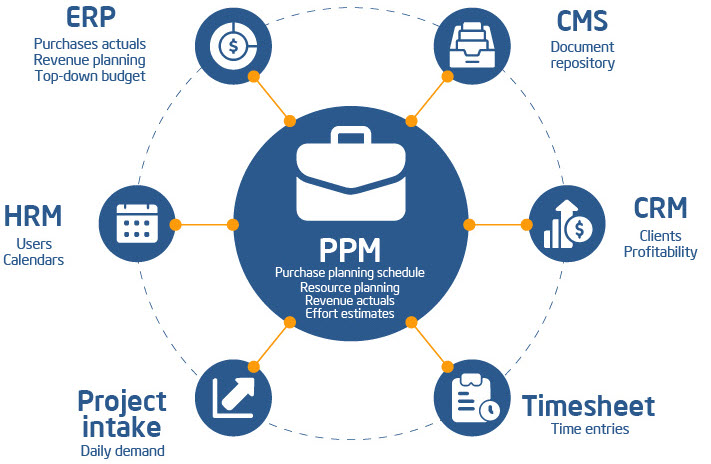
Some 84% of Project Management Offices fail within four years because of the disconnect with the business. Solid integration is the solution.
When you install a PMO or any other form of project portfolio management structure, your number one task is to connect with the rest of the company, its processes, and people.
Why it matters?
To do so, identify the business areas your PPM (Project Portfolio Management) needs to connect with, the potential benefits of integrating information systems, the stakeholders involved, and how to transform integration into value.
The next task is implementation: connect data sources and transform them into actionable information. This is where your PPM tool and all other systems, such as ERP, CRM, and HRM, need to talk.
This article describes the most common functional areas of the organization and the information traditionally exchanged. It will serve as a roadmap to meaningful integration of project portfolio management and how to create a solid and sustainable PMO.
As a guiding principle, we will use the concept of a “single source of truth”: the information can reside in several places, but only one is the origin.

This article will not focus on master data such as users, providers, etc. Instead, we will focus on the “living data” related to ongoing projects.
Budget allocation for projects can be fixed or flexible, with guardrails based on time or milestones.
In either case, the project budget usually belongs to another one with more resources linked to the program, portfolio, department, or business goals.
The budget is generally made up of figures representing the main items, such as the cost of labor, purchases, expenses, or revenue.
etc... cut short BCS staging